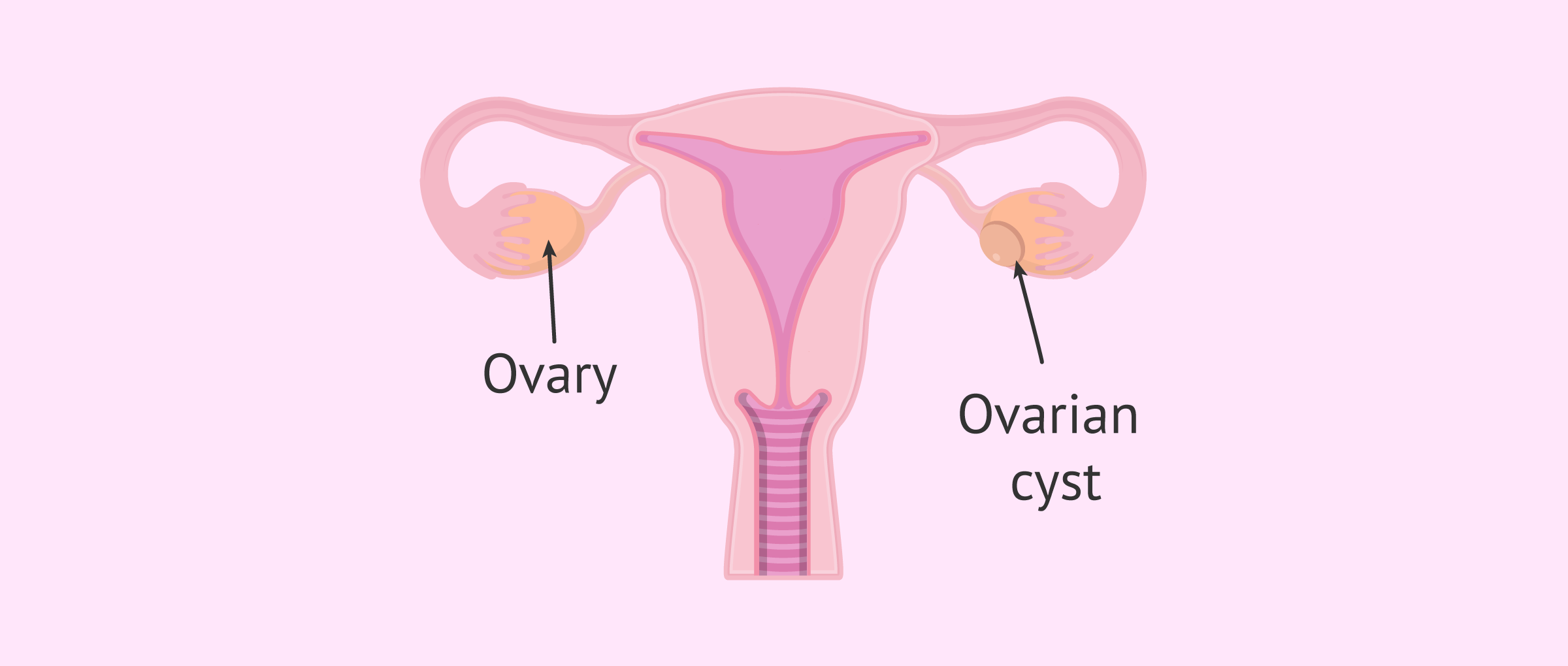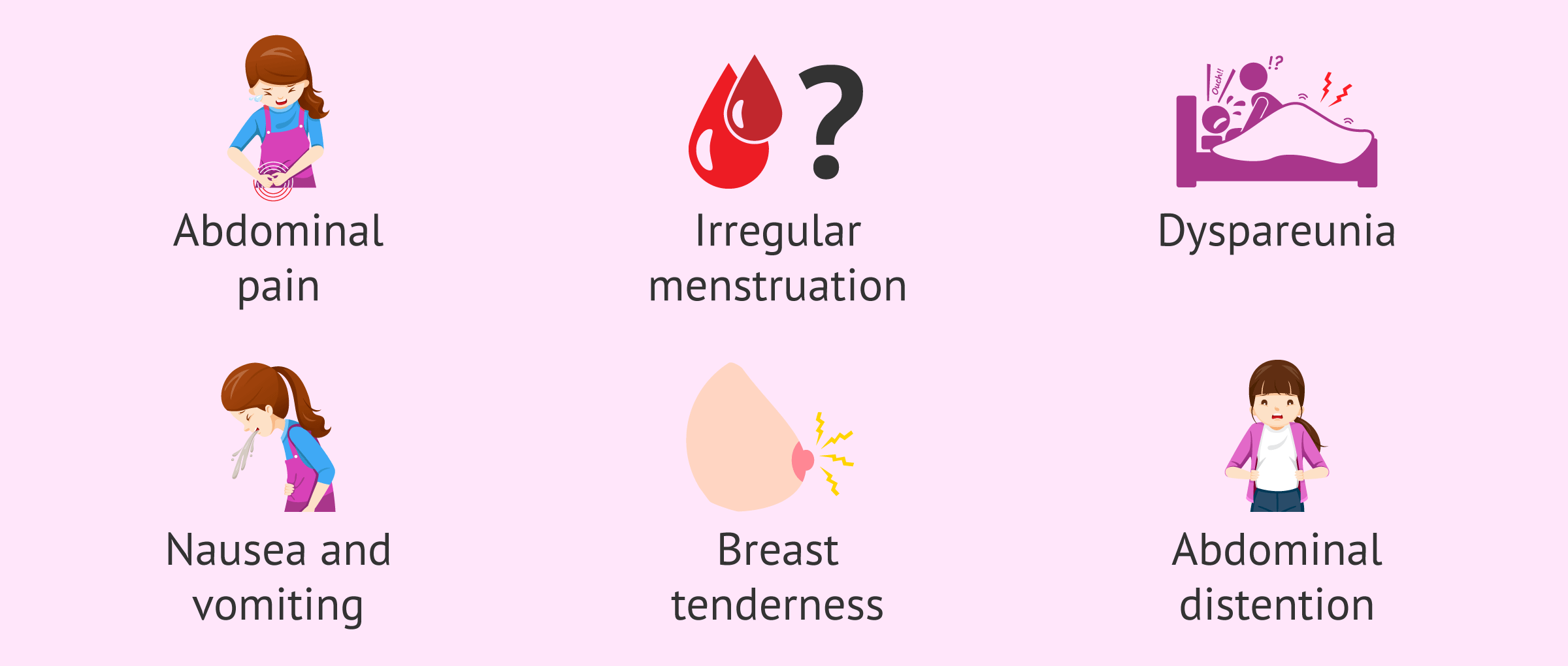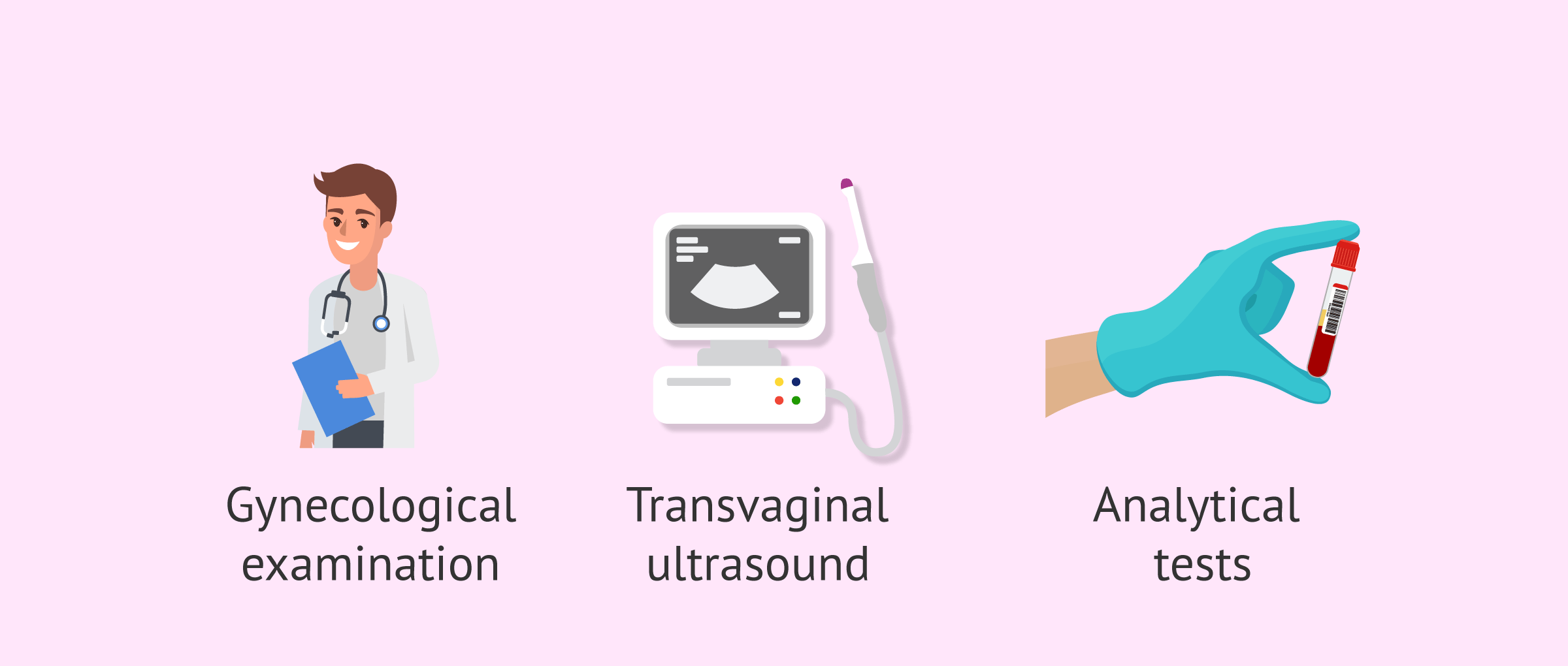Ovarian cysts are fluid-filled sacs that can form on the ovaries, either on the surface or inside one or both ovaries. Many women have a cyst of this type during their lifetime.
Most ovarian cysts form during ovulation and the woman has no symptoms or only mild discomfort. In these cases, ovarian cysts usually disappear on their own within a few months, without the need for treatment.
However, at other times, ovarian cysts can cause symptoms and even severe pain. In this situation, surgical intervention may be necessary to solve it. It´s important to know the symptoms and to make an early diagnosis to avoid confusion with ovarian cancer or other pathologies
Provided below is an index with the 10 points we are going to expand on in this article.
- 1.
- 2.
- 3.
- 4.
- 5.
- 6.
- 7.
- 7.1.
- 7.2.
- 7.3.
- 8.
- 9.
- 10.
Why do ovarian cysts appear?
Normally, cysts occur during normal ovarian functioning, either because the follicle does not rupture to release the egg (follicular cysts) or because, upon release, fluid accumulates in the remaining structure of the follicle (corpus luteum cysts). These two types of cysts that occur normally in the menstrual cycle are called functional cysts.
Follicular cysts can be more than 2.5 cm in diameter, are usually painless, and disappear spontaneously in two or three menstrual cycles.
However, corpus luteum cysts can measure up to 3 cm and usually disappear on their own within a few weeks.
Types of ovarian cysts
In addition to the aforementioned functional cysts, there are also other less common types of cysts. These are non-functional ovarian cysts that do not occur with the menstrual cycle but can have various origins. These ovarian cysts include the following:
- Serous cystadenoma: cyst of clear content and smooth surface. It can be of large size.
- Mucinous cystadenoma: ovarian tumor that can reach large size. They are round or ovoid masses, with a smooth, bluish-gray surface.
- Endometrioma: cyst produced by endometriosis, containing a thick chocolate-colored liquid.
- Dermoid cyst or mature teratoma: germ cell tumor that is usually benign.
In order to detect ovarian cysts that do not produce symptoms, it is very important to attend gynecological check-ups.
Symptoms
Generally, the appearance of ovarian cysts does not cause symptoms. Despite this, some women may notice:
- Constant abdominal or pelvic pain, which may radiate to the legs or back.
- Pelvic pain before and throughout menstruation.
- Irregular menstruation.
- Dyspaneuria, i.e., pain during intercourse.
- Nausea, vomiting or increased breast tenderness.
- Feeling of weight or abdominal distention.
- Pressure in the rectum or bladder, with a sensation of difficulty in emptying the bladder completely.
However, in case of acute abdominal or pelvic pain that appears suddenly, or if it occurs together with vomiting and fever, it is very important to go immediately to the emergency room. This pain may be caused by a complication such as a cyst rupture or ovarian torsion. This torsion means that the ovary rotates its position causing severe pain and can also make it difficult for blood to reach the ovary.
Nonetheless, it should be noted that if the ovarian cysts are of the endometrioma type, they can cause fertility problems in women.
Assisted procreation, as any other medical treatment, requires that you rely on the professionalism of the doctors and staff of the clinic you choose. Obviously, each clinic is different. Get now your Fertility Report, which will select several clinics for you out of the pool of clinics that meet our strict quality criteria. Moreover, it will offer you a comparison between the fees and conditions each clinic offers in order for you to make a well informed choice.
Diagnosis
Some ovarian cysts can be detected by gynecological examination by palpating the ovaries. Secondly, a transvaginal pelvic ultrasound may be performed to view the ovaries and facilitate identification of the cysts and their contents.
It will also be necessary to rule out pregnancy by doing a determination of beta hCG in the blood. If the result is positive, it may be a corpus luteum cyst, as this type of cyst is quite common during pregnancy.
Other complementary tests are a blood test for a protein called CA-125 and magnetic resonance imaging, which can be done in case of diagnostic doubt or if it is suspected that the cyst may be malignant.
Treatment
Treatment will depend on the type of cyst, its size, the symptoms it causes, and the age of the patient. After menopause, it is advisable to follow up any type of cyst because of its increased risk of malignancy.
In this way, the specialist may opt to simply wait and check after a few weeks that the cyst has disappeared. However, you may also consider resorting to surgical treatment to remove, above all, cysts that may be cancerous and all those that cause pain or other symptoms.
In women of reproductive age, an attempt will be made to remove as little ovarian tissue as possible, but in some cases, surgery may require removal of the ovary or even both ovaries. Finally, the anatomical pathology service will be the one to give the definitive diagnosis after analyzing the lesion.
Video on Ovarian Cysts
Cristina Algarra, Psychologist of InviTRA explains to us in this video what ovarian cysts are and the types we can find.
Ovarian cysts are fluid-filled sacs that appear on the ovaries, we can find them both on the surface or on the inside of the ovaries.
FAQs from users
What problems can be caused by the presence of ovarian cysts?
Cysts are cavities in the organism that contains liquid inside and have a capsule around them. There are functional cysts, non-functional cysts, and malignant tumors. Depending on the type of cyst a woman has in her ovaries, the problems it will cause will be different.
For this reason, it is essential to have gynecological check-ups to detect any alteration and to be able to request complimentary tests to make a safe diagnosis. In this way, the most appropriate treatment can be established to avoid major problems.
Read more
What are ovarian cysts?
Cristina Algarra, psychologist specialized in assisted reproduction for InviTRA, explains in this video what ovarian cysts are:
Ovarian cysts are fluid-filled sacs that appear on the ovaries, they can be on the surface or inside of the ovaries.
They form during ovulation and they generally don't have any pain associated with them. It is very important to have a lookout and diagnose them as soon as possible, due to the fact that if they are least untreated they can cause severe injuries or damages to our health.
Do ovarian cysts require surgical removal?
No, not all ovarian cysts require surgery. There are ovarian cysts that will disappear by themselves in a few months, without the need for any treatment.
However, the specialist may opt for surgical intervention depending on the type and size of the ovarian cyst, the symptomatology it is producing, and the woman's age.
Recommended readings
Throughout the article, we have discussed the menstrual cycle. If you want to learn more, you can visit the following link: The Different Phases of the Menstrual Cycle.
However, if you are interested in knowing more about endometriosis, we recommend you to read this article: What is endometriosis - Symptoms, diagnosis, and treatment?
We make a great effort to provide you with the highest quality information.
🙏 Please share this article if you liked it. 💜💜 You help us continue!
References
Asfour V, Varma R, Menon P. Clinical risk factors for ovarian torsion. J Obstet Gynaecol. 2015;35(7):721-5.
Bottomley C, Bourne T. Diagnosis and management of ovarian cyst accidents. Best Pract Res Clin Obstet Gynaecol. 2009 Oct;23(5):711-24.
Farghaly SA. Current diagnosis and management of ovarian cysts. Clin Exp Obstet Gynecol. 2014;41(6):609-12.
Legendre G, Catala L, Morinière C, Lacoeuille C, Boussion F, Sentilhes L, Descamps P. Relationship between ovarian cysts and infertility: what surgery and when? Fertil Steril. 2014 Mar;101(3):608-14.
Mobeen S, Apostol R. Ovarian Cyst. 2020 Jul 8. In: StatPearls [Internet]. Treasure Island (FL): StatPearls Publishing; 2021 Jan–.
Nowak-Psiorz I, Ciećwież SM, Brodowska A, Starczewski A. Treatment of ovarian endometrial cysts in the context of recurrence and fertility. Adv Clin Exp Med. 2019 Mar;28(3):407-413.
FAQs from users: 'What problems can be caused by the presence of ovarian cysts?', 'What are ovarian cysts?', 'Do ovarian cysts require surgical removal?', 'Why do ovarian cysts appear?', 'What types of ovarian cysts are there?', 'What are the symptoms of ovarian cysts?', 'How to diagnose ovarian cysts?', 'What problems can ovarian cysts cause?', 'How are ovarian cysts treated?' and 'Ovarian cysts require surgical removal?'.
Authors and contributors

More information about Cristina Algarra Goosman






Good afternoon, after reading this article I think I may have a cyst. All the symptoms fit me, I have been having irregular periods for 3 months, I am very bloated, and have intermittent pain in the abdominal area. I think I should go to a gynecologist.
Hello Sharon,
Based on the symptoms you have described I encourage you to go to your doctor as soon as possible so they can take a look and determine if you indeed have a cyst and most importantly what type of cyst.
I hope everything turns out okay and you start feeling much better soon.
Best wishes.
My doctor found a cyst in my right ovary a few months ago and I was very surprised because I did not know that they could appear suddenly in a natural way. It was detected in the ultrasound when I went for a check-up with my gynecologist. It didn’t hurt or anything, but I had to go for check-ups. After 3 weeks or so, it was gone. Thank goodness.
Hello Sarah,
These types of cysts are very normal, most women have them on various occasions throughout their life and don´t even notice it!. Nevertheless, it is very important to go in to get regular check-ups by your gynecologist to avoid having the harmful type of cysts like endometrioma or teratoma.
I´m so glad yours reabsorbed and everything is fine!
Thank you for your comment.